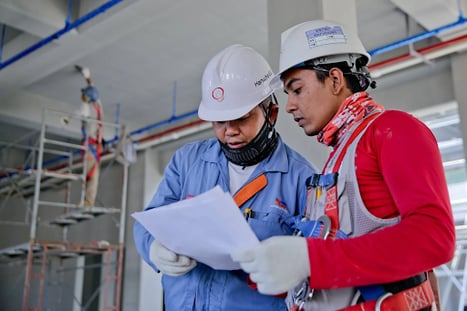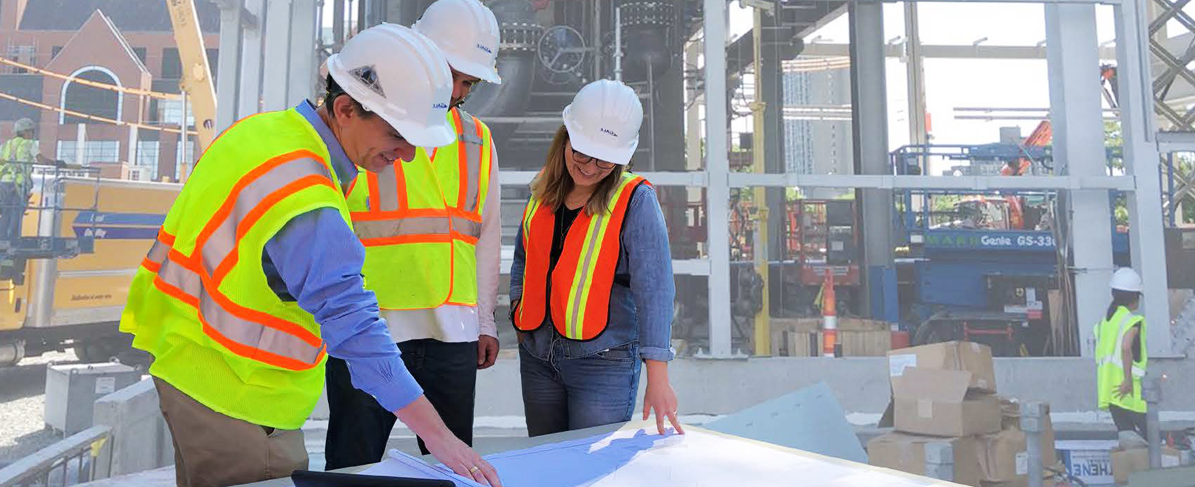The building enclosure commissioning process (BECx) is often misunderstood and the scope of services can vary significantly. According to the National Institute of Building Sciences (NIBS) Guideline 3-2012, BECx is “the process by which the design and constructed performance of building enclosure materials, components assemblies and systems are validated to meet defined objectives and requirements of the project, as established by the Owner.” So, what does this really mean?
Let’s go over some of the basics of building enclosure commissioning to help give you a good foundation on the topic.
What Is BECx?
While building enclosure commissioning is not new, it has changed over time, and is based on general commissioning standards, which are mechanical and system focused. This, unfortunately, added to the confusion surrounding its procedures. At its core, BECx is a process designed to ensure that buildings meet functionality and performance requirements.
BECx identifies deficiencies in building enclosures before construction is completed. It also confirms the components — roof, wall, water management systems, thermal layers, for example — will work as efficiently and effectively as the owner requires based on the building’s intended use and occupants’ needs.
Following standard practice identified in ASHRAE, NIBS, LEED and ASTM guidelines, the BECx process takes place through five major phases:
- Pre-Design Consulting
- Design Phase
- Pre-Construction Phase
- Construction Phase
- Operations & Maintenance Phase
BECx also doesn’t end at building occupancy, the commissioning plan actually follows the building through post-occupancy to confirm that the building performs as planned once it’s actually in use.
When you undertake a BECx, you'll work with a team of professionals. The building enclosure commissioning process provider (BECxP) is the consultant who implements and executes the BECx and leads the BECx group (BECxG), which includes the group of individuals who are working under direct supervision of the BECxP. This may be one person or may be several subject matter specialists and administrative staff.
Why Do Building Commissioning?
We are demanding more and more from our buildings — improved indoor air quality, greater energy efficiency, natural light, climate resiliency, and non-toxic materials. As these important qualities are implemented, the building's life cycle increases, and a higher level of performance is needed over time. Along with that, building owners expect lower budgets and tighter schedules.
Construction of a building is a long-term commitment and building enclosure commissioning is an important part of the process that assures the project's success. With BECx, potential problems with the building enclosure systems can be identified and remediated to prevent rework and returning to an already-constructed building to fix something.
While construction and installation techniques have improved dramatically in recent decades, there are a myriad of new materials available in the marketplace, and buildings can still have problems when dissimilar systems intersect or when building penetrations are not fully sealed. Building enclosure commissioning can identify these issues and prevent them from ever getting a foothold, saving valuable time and money in both the design and construction phases.
Water intrusion, for example, makes up more than 70% of construction litigation. Leaky buildings account for the majority of energy used, which translates to essentially throwing money out the window. For instance, according to Grainger and researchers at the Lawrence Berkeley National Laboratory, “Commercial buildings with constant-air volume systems often experience energy losses from air leakage of as much as 33%.”
When Does Building Commissioning Begin?
 BECx should begin very early in the design process during the pre-design phase. Once the type of project is determined and the building owners understand the goals, it's time to ensure the architect can meet those goals through design, materials specification and system selection.
BECx should begin very early in the design process during the pre-design phase. Once the type of project is determined and the building owners understand the goals, it's time to ensure the architect can meet those goals through design, materials specification and system selection.
The earlier you involve a BECxP, the earlier you can detect and resolve issues in the basis of design and design development phases. The ASTM E2813 Standard Practice for BECx has two levels of BECx: fundamental and enhanced.
The ASTM E2947 Standard Guide for BECx requires that, for the fundamental level, a BECxP is engaged during the pre-design phase for the enhanced guidelines or at minimum, no later than 65% through the design process. LEED V4 sets similar guidelines of engaging a BECxP before the end of design development.
Although commissioning starts early, the commissioning plan follows the building through occupancy and beyond to ensure the building's maintenance is performed and that the building enclosure systems remain in the optimal ranges as designed.
Of course, you can engage a building commissioner at any time in a building's life cycle — more modifications just might be necessary if inadequacies are uncovered.
Who Makes Up the Building Commissioning Group?
When you start the building enclosure commissioning process, you're going to be working with the lead provider, the BECxP and their team, which will include specialists and technicians. The building owner will be an important part of the team, along with the:
- Architect
- Sub-consultants
- Structural engineer
- Landscape architect
- Enclosure consultant
- Mechanical, electrical and plumbing (MEP) engineers
- Contractor and subcontractor
- Fabricators and manufacturers
- Building maintenance personnel
- Investors and stakeholders
- Occupants
- Community in general
The commissioning group will track each detail and be sure that any changes are communicated to the relevant team. The commissioning group will also perform periodic on-site observations and attend job site meetings where critical techniques are discussed or installed. Overall, the BECxG’s job is to ensure that the commissioning plan is followed and any potential issues have been addressed and rectified.
Does BECx Add Time to a Project?
While this process seems like a lot, it really does not add time to a project. In most cases, the BECxP attends meetings that would already be occurring. Additional meetings take place here and there, but it does not add significant time or complexity to a schedule, and often provides an added benefit. For example, building enclosure coordination meetings are used to review transitions between different systems and sub-contractors to review sequencing, compatibility, and constructability. Likewise, building enclosure testing is scheduled when the contractor is working on another area so no disruption occurs.
Hiring a BECx Agent
Engaging a commissioning group is a good idea to prevent future problems and headaches from popping up. Government agencies and some cities and states require building commissioning on certain projects because it has proven to be effective in preventing expensive litigation. The upfront cost of hiring a BECx agent can save you from making costly repairs later or project delays.
BECx Failure Criteria and Testing
Failure criteria are just what it sounds like — they are specified to identify minimum performance standards and successful installations. The BECxP will target known problem areas or unique conditions to help determine weak points so they can be reviewed early and tested to confirm performance. When it comes to BECx, common performance tests consist of the following:
- AAMA 501.2 (Quality Assurance and Diagnostic Water Leakage Field Check of Installed Storefronts, Curtain Walls, and Sloped Glazing Systems): This “nozzle test” examines the watertightness of glass structures. This is done a minimum of 3 times during construction.
- AAMA 502 (Voluntary Specification for Field Testing of Newly Installed Fenestration Products): This tests air and moisture infiltration in new window installations.
- AAMA 503 (Voluntary Specification for Field Testing of Newly Installed Storefronts, Curtain Walls, and Sloped Glazing Systems): This tests air and moisture infiltration in new structures.
In addition, other tests are performed to examine the rest of the structure’s qualities. Tests can vary depending on the type of building, but these are the most common:
- Air and water infiltration testing on opaque walls
- Air and water infiltration testing of windows
- Infrared roof scan
- Flood testing of horizontal waterproofing system
- Sealant inspection and testing
Demystifying BECx
BECx really is not as confusing or mysterious as it may seem. It’s a great tool to prevent building enclosure deficiencies and helps save time and money. The benefits of BECx are worth taking the time to understand its ins and outs.
Part 2 will dive even deeper into BECx to help demystify the concepts and procedures — stay tuned!







